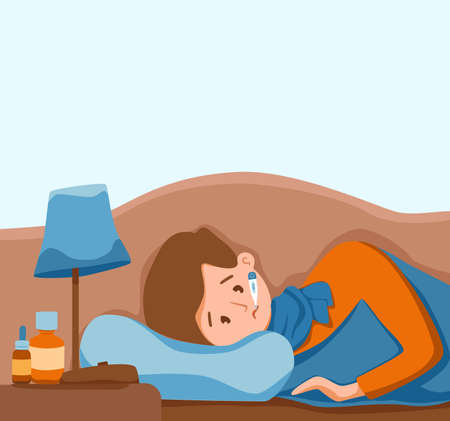Understanding the Impact of Your Bedroom Environment
When it comes to getting a good night’s sleep, your bedroom is more than just a place to crash after a long day—it’s a powerful tool that can either help or hinder your rest. Think about it: if you’ve ever tried falling asleep in a cluttered room with bright streetlights pouring through the window, or struggled with an old, noisy air conditioner on a hot summer night, you already know how much your environment matters. For many Americans, daily life is busy and stressful, so optimizing your bedroom for sleep isn’t just a luxury; it’s essential self-care. From the type of mattress you use to the color of your walls and the hum of electronics nearby, every detail can influence how well you sleep. In the following sections, we’ll dive into practical hacks and tips tailored for American homes, helping you transform your bedroom into a true sleep sanctuary.
Lighting Matters: Embracing Darkness for Deep Sleep
If you want to transform your bedroom into a true sleep sanctuary, lighting is one of the most powerful tools at your disposal. Our bodies are hardwired to follow natural light cycles; too much artificial light in the evening can mess with your melatonin production and leave you tossing and turning. The solution? Make darkness your ally.
Blackout Curtains: Your Sleep Superpower
Even small amounts of outside light—from street lamps, headlights, or early morning sun—can disrupt your sleep cycle. Installing blackout curtains is a simple, budget-friendly hack that can make a huge difference. These curtains block nearly all external light, creating a cave-like environment ideal for quality rest.
Dim Lighting for Wind Down
Bright lights in the evening signal to your brain that it’s time to be alert, not sleepy. Switch to dimmable lamps or bulbs with warm tones after dinner. You can also use smart bulbs set on a timer or dimming schedule so your space naturally transitions from bright to cozy as bedtime approaches.
Quick Reference: Light Management Tips
| Tip | How It Helps |
|---|---|
| Install blackout curtains | Blocks outdoor light, supports deep sleep |
| Use dimmable/warm-toned lights in the evening | Signals your brain to start producing melatonin |
| Avoid screens 1 hour before bed | Reduces blue light exposure, helps you feel sleepy |
Real-Life Application
If you’re not ready to invest in blackout curtains just yet, try an inexpensive sleep mask as a starter option. For bedside lighting, opt for salt lamps or low-wattage LED bulbs instead of overhead lights. These small changes add up—creating a peaceful oasis that invites real rest every single night.

3. Temperature Tweaks: Creating a Cool, Comfortable Oasis
When it comes to quality sleep, dialing in the perfect bedroom temperature is a game changer. Most sleep experts recommend keeping your bedroom between 60–67°F (15–19°C), but achieving this can look different depending on where you live in the U.S. Let’s explore practical strategies tailored to various climates and lifestyles.
Ceiling Fans for Subtle Cooling
If you live in regions with mild summers—think the Pacific Northwest or Northern states—a ceiling fan can be your best friend. Set your fan to spin counterclockwise during warmer months to create a gentle breeze that cools your skin and circulates air efficiently. In winter, reverse the direction to help distribute warm air rising to the ceiling.
Portable ACs for Hotter Zones
For folks in the South or Southwest where heat waves are common, portable air conditioners offer targeted cooling without overhauling your HVAC system. Look for energy-efficient models and set them on a timer or smart plug to keep temperatures steady through the night without running up your electric bill.
Natural Ventilation: Harnessing Fresh Air
In coastal or mountain areas where evening temps drop, take advantage of natural ventilation. Open windows an hour before bedtime to let in crisp air, then close them when you’re ready to sleep. Window fans or strategically placed box fans can help draw out warm air while pulling cooler breezes inside.
Bonus Tips for All Climates
No matter where you live, consider blackout curtains to block sunlight and insulate your room from outdoor heat or cold. Lightweight, breathable bedding—like cotton or linen—also helps regulate body temperature so you stay comfortable all night long. Play around with these tweaks until you find the sweet spot that transforms your bedroom into a restful oasis.
4. Decluttering and Minimalism: Less Mess, Less Stress
If you’ve ever felt tense just looking at your overflowing dresser or piles of laundry, you’re not alone. Clutter is more than just an eyesore—it’s a subtle stressor that can keep your mind buzzing long after you’re ready to sleep. Embracing minimalism and using some classic American organizing hacks can make your bedroom a true sanctuary for rest.
Why Clutter Hurts Sleep
Our brains crave order. Visual chaos—think scattered clothes, messy nightstands, or unused gadgets—sends signals that there’s still work to be done, making it harder to wind down. By simplifying your space, you’re also calming your mind, which paves the way for deeper, more restorative sleep.
American Organizing Hacks for a Tidier Bedroom
You don’t need fancy systems to get started. Here are some practical decluttering strategies inspired by everyday American homes:
| Hack | Description |
|---|---|
| One-In, One-Out Rule | For every new item you bring in (clothes, décor), remove one old item. This keeps accumulation in check. |
| Under-Bed Storage | Use bins or drawers under the bed for off-season clothing or extra linens—out of sight, out of mind. |
| The 10-Minute Tidy | Set a timer before bed and spend 10 minutes putting things away. Small efforts add up over time. |
| Baskets & Bins | Group similar items together in labeled baskets (e.g., reading material, electronics) so surfaces stay clear. |
Tackling Sentimental Items
If you’re struggling with letting go of certain belongings, try the “memory box” method: designate a small box for sentimental items and limit yourself to what fits inside. This way, memories are honored without overwhelming your space.
The Minimalist Mindset Shift
Minimalism doesn’t mean your room has to look sterile or impersonal. It’s about keeping only what adds value or joy to your daily life. When everything in your bedroom serves a purpose or makes you smile, unwinding becomes effortless—and sleep comes easier.
5. Tech-Free Zone: Limiting Electronics for Better Rest
In our always-connected world, it’s tempting to scroll through emails or binge-watch shows right up until bedtime. But the blue light from screens can disrupt your body’s natural sleep cycle, making quality rest harder to come by. To truly optimize your bedroom for better sleep, creating a tech-free environment is a game changer—especially for families juggling multiple devices.
Set Up Family-Friendly Charging Stations
Designate a central charging station outside the bedrooms—like in the kitchen or living room—where everyone plugs in their phones and tablets before heading to bed. Make this a family ritual so kids and adults alike are less tempted to sneak devices under the covers. Label cords with each person’s name to make it easy and organized.
Create No-Phone Zones
Establish clear boundaries by declaring the bedroom (or at least the bed itself) a no-phone zone. You can use simple baskets or small boxes near the bedroom door for last-minute device drop-offs. Consider putting up a fun sign as a reminder—something like “Rest, Recharge, Repeat.” This helps reinforce the idea that your bedroom is meant for winding down, not scrolling endlessly.
Swap Screens for Sleep-Friendly Alternatives
If you’re used to using your phone as an alarm clock, switch to an old-fashioned alarm or a sunrise clock that gently wakes you with light. Replace screen time before bed with calming activities: read a physical book, listen to soft music, or try journaling. These alternatives promote relaxation and signal to your brain that it’s time to power down.
By keeping technology out of the bedroom and prioritizing restful routines, you’ll create an environment where everyone—from busy parents to teens—can enjoy deeper, more restorative sleep. Give these tech-free hacks a try and notice how much easier it is to drift off and wake up refreshed.
6. Investing in Quality Sleep Essentials
When it comes to optimizing your bedroom for better sleep, never underestimate the power of investing in high-quality sleep essentials. The right mattress, pillow, and bedding do more than just add comfort—they’re foundational for supporting your unique sleep needs and ensuring you wake up refreshed.
Choosing the Right Mattress
Your mattress is arguably the most important component of your sleep environment. In America, brands like Tempur-Pedic, Serta, and Casper have become household names because they offer a variety of options tailored for different preferences. Whether you need memory foam for pressure relief, an innerspring for a traditional bounce, or a hybrid that offers the best of both worlds, there’s something for everyone. If you’re a side sleeper, look for plush models that cushion your shoulders and hips; if you’re a back or stomach sleeper, firmer mattresses provide essential support.
Pillows Matter More Than You Think
The wrong pillow can lead to neck pain and restless nights. American brands like Purple, Coop Home Goods, and MyPillow offer a range of pillows designed to accommodate various sleeping positions and personal preferences. Adjustable pillows with removable filling are gaining popularity because they allow customization of height and firmness—crucial for finding your perfect fit.
Bedding That Supports Restful Sleep
Quality bedding isn’t just about thread count. Look for breathable fabrics like cotton or bamboo to regulate body temperature throughout the night—a key consideration in places with significant seasonal changes across the U.S. Brands such as Boll & Branch, Brooklinen, and L.L.Bean are favorites among American sleepers for their commitment to both comfort and durability. Weighted blankets, which have surged in popularity in recent years, can also help reduce anxiety and promote deeper sleep.
Your Personal Comfort Zone Matters
The best sleep setup is one that matches your individual needs—there’s no one-size-fits-all solution. Don’t be afraid to mix and match products from different brands to build your ideal sleep sanctuary. Many companies now offer generous trial periods and return policies so you can test essentials in your own home before committing.
Upgrading your sleep essentials may seem like a big investment up front, but considering how much time we spend in bed (about one-third of our lives!), it’s truly money well spent. By curating mattresses, pillows, and bedding that meet your unique requirements, you’ll create a bedroom environment primed for restorative rest every single night.
7. Personalizing Your Sleep Space
When it comes to optimizing your bedroom for better sleep, personalization can make all the difference. Creating a space that truly feels like your own oasis helps your mind relax and signals to your body that it’s time to wind down. Consider incorporating calming scents—like lavender, chamomile, or vanilla—using an essential oil diffuser or scented candles. These fragrances are not only comforting but have been shown in studies to promote relaxation and improve sleep quality.
Next, think about the colors in your bedroom. Soft hues such as gentle blues, muted greens, or warm earth tones can evoke feelings of tranquility and peace. If repainting isn’t an option, try adding these shades through bedding, throw pillows, or wall art. Remember, the goal is to create a soothing environment that encourages restfulness from the moment you step inside.
Don’t underestimate the power of sentimental decor. Displaying meaningful photos, souvenirs from memorable trips, or heirlooms can provide comfort and a sense of belonging. Just be mindful not to clutter your space—keep things simple and intentional so your bedroom remains a retreat rather than a storage zone.
Ultimately, personalizing your sleep space is about making choices that help you feel safe, calm, and at ease. Experiment with different elements until you find what works best for you. The more inviting and restful your bedroom feels, the easier it will be to leave stress at the door and get the restorative sleep you deserve.


